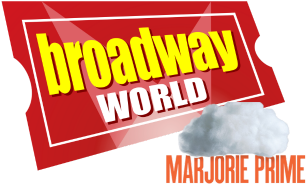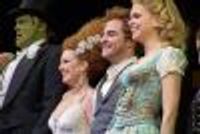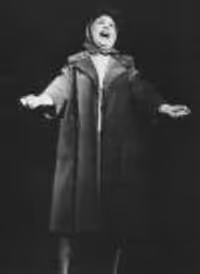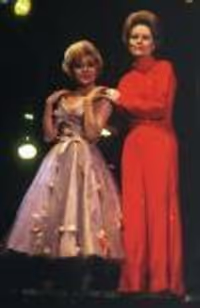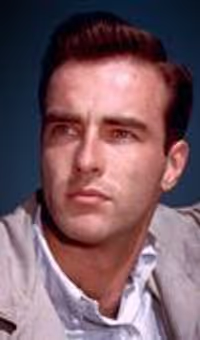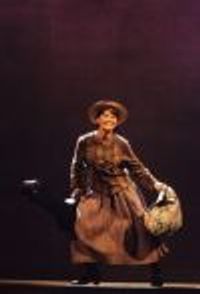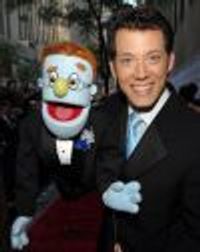Why Was Mary Martin Such a Big Star? - Now with Stage Miking Discussion
ifuweregay93
Broadway Legend Joined: 1/19/06
Lynnespock2
Broadway Star Joined: 5/14/04
#26Why was mary martin such a big star?
Posted: 12/18/08 at 4:55pm
I saw Ms. Martin in sound of Music, my first Broadway show and I can assure you, she was the most amazing person I have ever seen on the stage. She connected with the audience in a way that made you feel she was singing to you, just for you.
She had such stage presence that even as a child I was awe stuck by her.
#27Why was mary martin such a big star?
Posted: 12/18/08 at 4:59pmMy uncle told me that her star power existed in the fact that regardless of what performance you were at or how many performances she had done, she was always as fresh as the first time she did it. Maybe that is why she got away with playing people 20 years younger than herself.
#28Why was mary martin such a big star?
Posted: 12/18/08 at 5:23pm
According to her autobiography, when she was in a show, she had no social life because she wanted to be fresh for every performance.
I had the opportunity to meet her in the 1980's and she was as wonderful in person as on stage.
LadyDramaturg2
Featured Actor Joined: 8/21/08
#29Why was mary martin such a big star?
Posted: 12/19/08 at 4:16am
NobodyHome says, "there were floor mikes and possibly other area mikes in all the Broadway musicals she did starting with South Pacific."
I've looked and looked, and can't find the name of the Sound Designer for South Pacific (in the 1949 production, right?)
I did see Mary Martin and Robert Preston in I Do! I Do! -- the 46th St Theater was pretty big for a 2-person show. You know, there may have been boundary mics as suggested, but [I was a theater-tech-geek back then as now, and] there were no speakers in the theater. So unless they were built into the proscenium and completely masked with wood-like fabric...there would be no way for any amplified sound to be fed to the house. [I'm pretty sure there was no sound reinforcement on that show, but I can double check with my boss, who did the design for many other shows in the '50s, '60s, '70s...]
The most powerful thing about Mary Martin, in my experience, was that she was an extraordinary singing actress. She was so completely believable, and so powerfully captured you as an audience member and carried you into and through the story --
There are very few theater actors who can do this today, and when we find them, we make them into big stars (Raul, e.g.). I think on film, she seemed to be perfectly capable, but live, oh, man, you just wanted to grow up to be able to do what she did.
#30Why was mary martin such a big star?
Posted: 12/19/08 at 2:48pm
LadyDramaturg2 wrote, "NobodyHome says, "there were floor mikes and possibly other area mikes in all the Broadway musicals she did starting with South Pacific."
"I've looked and looked, and can't find the name of the Sound Designer for South Pacific (in the 1949 production, right?)
"I did see Mary Martin and Robert Preston in I Do! I Do! -- the 46th St Theater was pretty big for a 2-person show. You know, there may have been boundary mics as suggested, but [I was a theater-tech-geek back then as now, and] there were no speakers in the theater. So unless they were built into the proscenium and completely masked with wood-like fabric...there would be no way for any amplified sound to be fed to the house. [I'm pretty sure there was no sound reinforcement on that show, but I can double check with my boss, who did the design for many other shows in the '50s, '60s, '70s...]"
Sound designers were rarely if ever credited before the 1970s because prior to that time it was all very primitive.
Richard Rodgers himself said that the last Rodgers and Hammerstein show that was unamplified was Carousel. After that, all Rodgers and Hammerstein shows on Broadway were amplified. See page 304 of The Richard Rodgers Reader, edited by Geoffrey Block. This was also mentioned in an exhibition about Rodgers at the Library of the Performing Arts, probably in his centennial year of 2002.
In addition, it's mentioned in Mark N. Grant's The Rise and Fall of the Broadway Musical, an extremely uneven but sometimes very interesting book. It has a pretty good chapter on the history of amplification on Broadway, though there are some factual errors in that chapter (and in a number of places elsewhere in the book). For instance, he says that Carol Channing in Hello, Dolly! was the first performer on Broadway to have been body-miked, which seems not to have been true. It seems that she was preceded by at least Anna Maria Alberghetti in Carnival and perhaps Lena Horne in Jamaica. But some of this history is a bit shadowy as no one wanted to admit to being body-miked.
I didn't see I Do! I Do1 but by that time pretty much every Broadway musical had floor mikes, though there were a few — very few — exceptions. I was already seeing musicals by that time and I remember huge speakers at the ones I saw. I can't imagine that there weren't speakers because even unamplified nonmusicals often had speakers for things like understudy announcements, incidental music and sound effects.
Also, it was a Merrick show and Merrick shows were notorious for being heavily amplified because he was somewhat hard of hearing, although (at least according to Howard Kissel's bio of Merrick) the amplification may have been louder on opening nights when Merrick was in attendance because he'd complain if it wasn't loud enough for him to hear (see page 159, The Abominable Showman). The critics were well aware of it. Kissel quotes Chapman in the Daily News writing of Destry Rides Again that it was "bugged with more mikes than the whole Soviet spy system owns."
As you may remember, I Do! I Do! had the orchestra backstage behind a scrim. A situation like that pretty much ensures the need to mike.
According to some historians, the first book musical in a standard Broadway house to have been amplified was Du Barry Was a Lady (yes, a Merman show) in 1939. Brass-heavy orchestrations. They tried to hide the mikes and the critics weren't aware of it though they were aware of it in The Earl Carroll Vanities of 1940 and mentioned it in reviews.
Earlier still, Jumbo was amplified, which was probably inevitable since it played in the huge Hippodrome. Ted Chapin mentioned this in the post-show discussion of the Musicals in Mufti production a few years ago.
Updated On: 12/19/08 at 02:48 PM
#31Why was mary martin such a big star?
Posted: 12/19/08 at 4:31pmMy Uncle was a Broadway sound designer. Even still, though, I've always wondered about the History of Broadway Amplification. When did it start and how was it even possible that before microphones a person could be heard by someone sitting in the back row of the balcony. I just can't imagine that as possible unless the person could hear the performer but not very well.
jimmycurry01
Broadway Legend Joined: 5/28/05
#32Why was mary martin such a big star?
Posted: 12/19/08 at 4:40pmThe best answer to the question is, she is just fun to watch. She clearly enjoyed what she was doing, and it always shows.
#33Why was mary martin such a big star?
Posted: 12/19/08 at 5:06pm
"My Uncle was a Broadway sound designer. Even still, though, I've always wondered about the History of Broadway Amplification. When did it start and how was it even possible that before microphones a person could be heard by someone sitting in the back row of the balcony. I just can't imagine that as possible unless the person could hear the performer but not very well."
I'm not an expert on this but some theatres are very well designed acoustically and it can be amazing how well the voice can travel. Other theatres are not so well designed acoustically. And despite a lot of research, it's still a little tough to predict what the best design is to produce good acoustics.
I certainly saw lots of plays in the days before even most plays were amplified on Broadway. And even now plays occasionally are completely unamplified. I've always been reluctant to sit in the rear mezzanine or balcony but I've done it enough to know that you can usually hear up there. If anything, the area that can sometimes be more problematic is under any sort of overhang.
But you did have to listen. And I think people just don't listen as they used to.
If you go the Met and you sit way upstairs in the balcony, many people feel that's where the sound is best. Even though there are rumors that some singers are miked at the Met, it's yet to be proved and I think most people agree that most singers there are still unmiked. And certainly that was true for a long, long time.
There are even some huge outdoor arenas in Europe where opera is done and I believe it's unamplified in at least some of them. It's all about the design and the somewhat mysterious elements that produce good acoustics for the human voice to travel.
Though I do think it's also true that sometimes in pre-amplification days, actors weren't heard so well. That's one of the reasons why amplification started to be used on Broadway. I think it was in that Rodgers exhibition that it said Rodgers and Hammerstein were great champions of amplification because at last the actors could be heard by everyone.
But in musicals back in pre-amplification days, things were done very differently in order to help voices. Orchestrations were lighter and were designed to support rather than compete with the voice. Of course, the orchestras weren't amplified.
Musical numbers were mostly staged way downstage and many of them were "in-one," in front of curtains or drops that may have helped project the sound forward.
This may sound a little strange, but in the last 20 or 30 years the number of lighting instruments on Broadway shows has grown extraordinarily. Lighting instruments make noise. It's almost white noise, but it competes with hearing the actors. More lighting instruments, more noise.
And air-conditioning makes noise too. It may not be entirely a coincidence that around the same time Broadway theatres started to be air-conditioned, amplification started to be used. Obviously, both technologies became available around the same time, but still.
Here's an interesting Peter Filichia piece on amplification:
http://www.theatermania.com/content/news.cfm?int_news_id=4778
#34Why was mary martin such a big star?
Posted: 12/19/08 at 5:50pm
This thread is my new favorite. Thank you all for sharing.
The only experience I have from her is on recording. I've always LIKED her, but, to do a side by side comparison, Ethel Merman had a voice that HAD to be a star's. It just screamed it. Mary Martin, on the other hand, always seemed to have this very nice voice, but I never really understood what kept her so high in the ranks. This thread really explained it (and included some great stories). Thank you all!!
Lynnespock2
Broadway Star Joined: 5/14/04
#35Why was mary martin such a big star?
Posted: 12/19/08 at 5:57pm
LadyDramaturg2: You hit the nail on the head. After I saw Mary Martin, I wanted to be on Broadway. Fortunately, for me and the rest of the world, I found my niche and the only acting I do is acting like a teacher in front of middle school kids.
#36Why was mary martin such a big star?
Posted: 12/19/08 at 9:45pm
She was supposedly quite profound in South Pacific. I didn't see her in that, but judging from the album, I'm sure she was superb. She was marvelous in Peter Pan, as the TV special proves. I have an audio of her in The Sound of Music and she is truly charming. While Merman deserved the Tony for Rose in Gypsy, Martin was quite good in the role.
She was just a charming, lovely stage personality. She was a good actress, as she played rather dramatic roles in South Pacific and The Sound of Music and was very good with comedy. But really, it comes down to a unique personality. That's what made her a star.
Dollypop
Broadway Legend Joined: 5/15/03
#37Why was mary martin such a big star?
Posted: 12/19/08 at 9:50pm
I saw Mary Martin on tour in HELLO, DOLLY! and in a Broadway play called (I think) DO YOU TURN SOMERSAULTS? She had to be seen to be appreciated: warmth flowed easily from her and when she sang a song, you knew is was SUNG. Her Dolly was an extremely "nice" lady but she did miss a few of the laughs that other actresses brought to the role. Still, she had an unmistakable stage presence.
Jack King
Featured Actor Joined: 12/1/08
#38Why was mary martin such a big star?
Posted: 12/20/08 at 4:55am
You don't have to be a big star to smoke a cigar, I always say!
Ahhhhhhhhhhhhhhhhhhhhhhhh, tis time for bed for moi.
To sleep,
perchance to dream?
#39Why was mary martin such a big star?
Posted: 12/20/08 at 9:34am
Mary Martin wasn't a conventional leading lady. She was a broad comedienne, who could also do drama (occasionally, if it wasn't too demanding). And she was damn funny, too. Just look at those South Pacific clips, and you'll see what I mean.
I would liken her more to Carol Burnett than (say) Bernadette Peters or Patti LuPone.
Mary was a huge star, but a character actress. And above all else, it was her personality that put her over the others.
She was also one hell of a belter and could fill a theatre better than probably 90 percent of the whiny-voiced ladies on Broadway today.
blocked: logan2, Diamonds3, Hamilton22
LadyDramaturg2
Featured Actor Joined: 8/21/08
#40Why was mary martin such a big star?
Posted: 12/20/08 at 2:57pm
Nobodyhome: "But in musicals back in pre-amplification days, things were done very differently in order to help voices. Orchestrations were lighter and were designed to support rather than compete with the voice. Of course, the orchestras weren't amplified..."
Now we're getting somewhere. A recent article in one of the sound trades had an interview with the current So.Pac. sound designers, who described how artfully the orchestrations were created, so as to allow singers to be heard. [too lazy to look up the cite]
It's not necessarily that the orch.s were "light," it's that the orchestra would stay out of the way of the singers, and the instruments accompanying any given singer wouldn't have the same timbre as the vocalist(s), and wouldn't accompany in the same range as the vocalist [ooohhh, sorry, orchestration 101 lecture there.]
But, I gotta tell ya, Mary Martin had a BIG voice, and not in the way Ethyl M had a big voice. It was so deceptive -- it's like her tone was really --dense-- and full, even in the low register -- and up high, she didn't go all squeaky either -- it was a real force of nature.
But her true genius was in the way she used her gifts: you couldn't "see" her "acting," as they say, she would just "be."
Breathtaking, really.
Whispering
Swing Joined: 9/9/08
#41Why was mary martin such a big star?
Posted: 12/20/08 at 9:11pm
OK, I am old and I have lived near Broadway all my life.
I saw Mary Martin in Peter Pan as a small child and in Sound of Music. She had a wonderful voice an voice that could carry you away with it. I don't think she could ever play a villain though, she was just to damn likeable. After I saw her, I dreamed of starring on Broadway, but instead I became an early computer geek, no voice or charisma or talent, sadly.
Mary Martin had it all. I never saw Ethyl Merman live, but I did on live TV and had tons of Broadway albums, not the same.
I think you just had to be there.
wonkit
Broadway Legend Joined: 9/30/08
#42Why was mary martin such a big star?
Posted: 12/21/08 at 10:09pmShe may have been one of the earliest triple threats - she started as a dancer, after all.
#43Why was mary martin such a big star?
Posted: 12/21/08 at 10:34pmHey, jv92 - I have an audio of the OBC of The Sound of Music as well! I think it must be the same one - I can't imagine there being two of a show that old. I don't know anything about mine - when it was recorded and such, and I'm not 100% sure about who some of the cast are. Do you know any details about the one you have?
#44Why was mary martin such a big star?
Posted: 12/21/08 at 11:54pmShe was magnificent. I was lucky enough to see both Mary Martin and Ethel Merman live when I was a child. I adored them both, but, honestly, Mary Martin was the more masterful actress.
http://www.roches.com/television/ss83kod.html
**********
"If any relationship involves a flow chart, get out of it...FAST!"
~ Best12Bars
#45Why was mary martin such a big star?
Posted: 12/22/08 at 12:15amI believe the SOM audio has all the original principals (including all the original kids) except that it's Jon Voight as Rolf! It definitely doesn't sound like Brian Davies.
#46Why was mary martin such a big star?
Posted: 12/22/08 at 1:19am
I never got to see her perform live. I almost sort of got to meet her once. Pittsburgh Civic Light Orchestra gave her the first "Richard Rodgers Award". A friend of mine was going and it was being held at a private house near where I worked. I was working late that evening and thought that I might be able to sneak in as the festivities would have geen going on for some time at that point. Well, they had a guard who kept me at the bottom of the driveway. I thought that I might get a chance to blather at her how much I adored her work (and how much I cried at the end of "Peter Pan" the last time that they showed it on TV) when she came down to the limousine.
Why I didn't realize that they would drive the limo up to where the seventy year old actress was waiting is beyond me. But the guard did get her autograph for the obviously gay young man who waited outside for several hours. It is one of my prized possessions.
I have a video of the "Annie Get Your Gun" and there is such a childlike quality to her. It's only when the light catches her hands at certain angles that you realize that she must have been in her forties when she filmed it and is a good decade older than her co-star John Raitt.
#47Why was mary martin such a big star?
Posted: 12/22/08 at 7:51pm
I believe the SOM audio has all the original principals (including all the original kids) except that it's Jon Voight as Rolf! It definitely doesn't sound like Brian Davies.
I don't think that's the one I have - I believe it is Brian Davies. According to the little bit of information I have it's from November or December 1959, right after the show opened, and Voight didn't take over as Rolf for about a year afterwards. The only ones I'm not sure about are the von Trapp boys - for whatever reason they call the older one (whose voice I do not recognize) 'Kurt' and the younger one 'Friedrich.' And he does sound like the original Friedrich. The only way I can account for that is an understudy or an out-of-town tryout.
Just so as to keep this sort of on topic, or at least on the topic of amplification, I remember reading something about amplification in this production. The first part of the 'Preludium' was performed in an offstage room and broadcast throughout the theatre via speakers. I'll try to find the article, but it was on the R&H site and they've redone the whole thing, so I might not be able to.
#48Why was mary martin such a big star?
Posted: 12/22/08 at 9:47pm
It's possible that what I was told was wrong. Someone told me that he'd spoken to Theodore Bikel, who knew about the recording, and Bikel said it was Jon Voight. And when I listened to it after having heard that, I thought, "This doesn't sound like Brian Davies."
I suppose that if it does come from early in the run, as you were told, then it might be an understudy for Davies. Or maybe it is Davies. My information is certainly not definitive.
It seems pretty unlikely that there would be more than one recording out there. But possible.
#49Why was mary martin such a big star?
Posted: 12/22/08 at 10:23pmWell this thread went astray, but I like it. Hence the title change.
Videos
